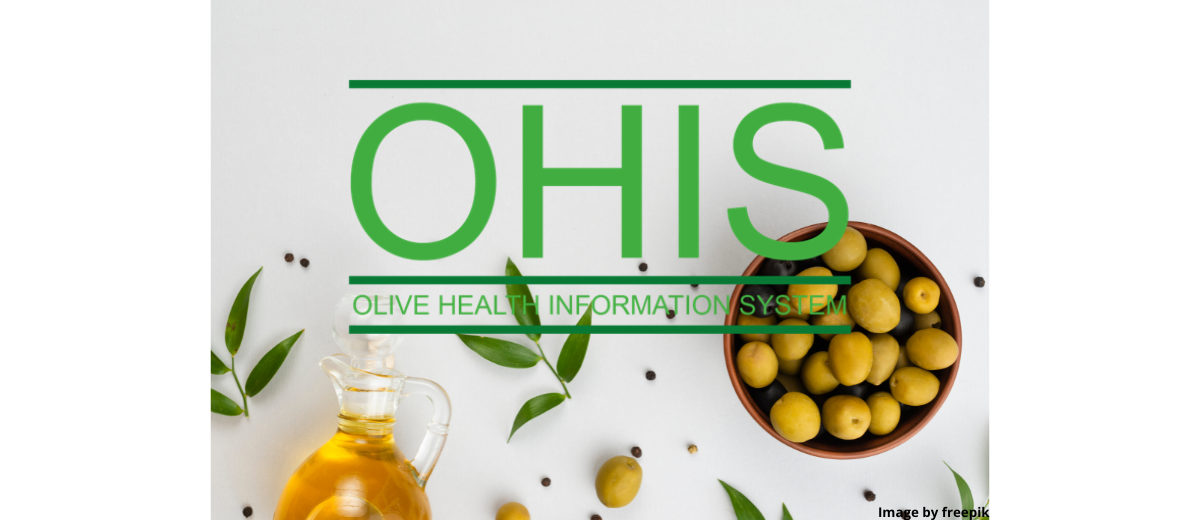This week on the Olive Health Information System website
The newsletter of the University of Navarra and the IOC dedicated to health
Article 1
The Mediterranean diet—a traditional eating pattern from countries bordering the Mediterranean Sea—is known for its emphasis on fruits, vegetables, legumes, whole grains, and especially olive oil as the primary fat source. In this edition, we explore emerging research linking this dietary pattern to bone health and reduced risk of autoimmune diseases.
Hip fractures are a major health concern, especially among older adults. Promising research suggests that embracing the Mediterranean diet may offer a delicious and effective approach to protecting bone health. A recent systematic review and meta-analysis examined the relationship between adherence to the Mediterranean diet and the risk of hip fracture in adults, drawing on data from 15 cohort studies involving over 500,000 people. The findings are compelling: both high and moderate adherence to the Mediterranean diet were linked to significantly lower risks of hip fracture—by 29% and 22%, respectively. This protective effect was observed in both men and women. Furthermore, the analysis found a dose-response relationship: for each incremental increase in adherence, the risk of hip fracture dropped by approximately 5%. These results support the Mediterranean diet as a practical strategy for enhancing bone health and reducing fracture risk in the general population.
Beyond its role in bone health, the Mediterranean diet may also help reduce the risk of autoimmune diseases, such as rheumatoid arthritis (RA). A recent study examined this potential benefit by analyzing data from over 117,000 participants in the UK Biobank. All participants were initially free of RA and were followed for about nine years. Adherence to the diet was assessed using the MEDI-LITE score. The results revealed that participants with the highest adherence had a 29% lower risk of developing RA compared to those with the lowest adherence. The study also included a systematic review and meta-analysis of six previous studies, which confirmed that greater adherence to the Mediterranean diet is associated with a reduced risk of RA of 17%. Together, these findings provide robust evidence that this dietary pattern may play a key role in RA prevention, highlighting the broader health benefits of adopting a Mediterranean-style diet.
Article 2
The first piece we highlight in this week’s newsletter is a narrative review of the Mediterranean Diet Pyramid, reflecting on more than three decades of nutritional guidance and cultural heritage. At the center of this dietary pattern is extra virgin olive oil, praised not only for its flavour but also for its health-promoting properties. As the pyramid has evolved, olive oil has consistently held its place, reinforcing its essential cultural and nutritional role. This legacy invites us to look deeper into how production practices and molecular science can influence the quality and characteristics of extra virgin olive oil today.
In this context, one study examines how different short-term storage conditions of olives — specifically, the period between harvest and oil extraction — affect the quality of extra virgin olive oil. Researchers stored olives for up to seven days under three conditions: room temperature, refrigeration (4 °C), and freezing (−20 °C). They found that while certain components such as fatty acids, squalene, and phytosterols remained stable, other key quality attributes were significantly influenced by storage methods. Room temperature storage led to higher oil yield but also caused undesirable flavors, such as fermentation and mold. Freezing resulted in the lowest oil yield and a significant loss of beneficial compounds. Refrigeration, on the other hand, preserved freshness, color, healthy antioxidants, and a pleasant “green” aroma. The authors concluded that if olives cannot be milled within 24 hours, refrigeration is the best option to maintain both the nutritional value and sensory quality of the oil.
A second study explores how specific phenolic compounds in olives — known for their strong health benefits — influence the bitterness and pungency of extra virgin olive oil, two of its most defining sensory attributes. Researchers analyzed 200 samples, categorizing them into three flavor intensity profiles: delicate, medium, and robust, based on taste panel evaluations. The results showed that the total amount of phenolic compounds was associated with the intensity of both bitterness and pungency, but individual phenols contributed differently. Bitterness was primarily linked to aglycone isomers of oleuropein and ligstroside, while pungency correlated most strongly with oleocanthal, oleomissional, and oleokoronal. The study concludes that the sensory profile of extra virgin olive oil is shaped not only by the overall phenolic content, but also by the specific composition of these compounds.
Together, these two studies shed light on the complex journey from olive to oil. The delicate interplay between careful storage and natural biochemical processes ultimately determines the flavor, quality, and health benefits of extra virgin olive oil.
Other articles mentioned these weeks in the OHIS newsletter:
Olive (fruit)
Impact of short-term storage of olive fruits on the quality of virgin olive oil
Cardiovascular Disease
Relationship Between Dietary Inflammatory Index, Diets, and Cardiovascular Medication
Brain and Mental Health
Dietary Patterns and Brain Health in Middle-Aged and Older Adults: A Narrative Review
Extra virgin olive oil
Phenolic Metabolism Explains Bitterness and Pungency of Extra Virgin Olive Oils
Intestinal Disease
Personalized Dietary Approaches to Optimizing Intestinal Microbial Health and Homeostasis
Mental Health
Diet quality and depression risk: A systematic review and meta-analysis of prospective studies
Diet and other topics
Meal timing, nutritional status and diet quality in a group of Spanish children
Mediterranean Diet and Risk of Hip Fracture: A Systematic Review and Dose-Response Meta-Analysis
Autoimmune diseases
Obesity
The Impact of Different Nutritional Approaches on Body Composition in People Living with Obesity
Women’s health
Mortality
Other articles
Associations Between MASLD, Ultra-Processed Food and a Mediterranean Dietary Pattern in Older Adults










